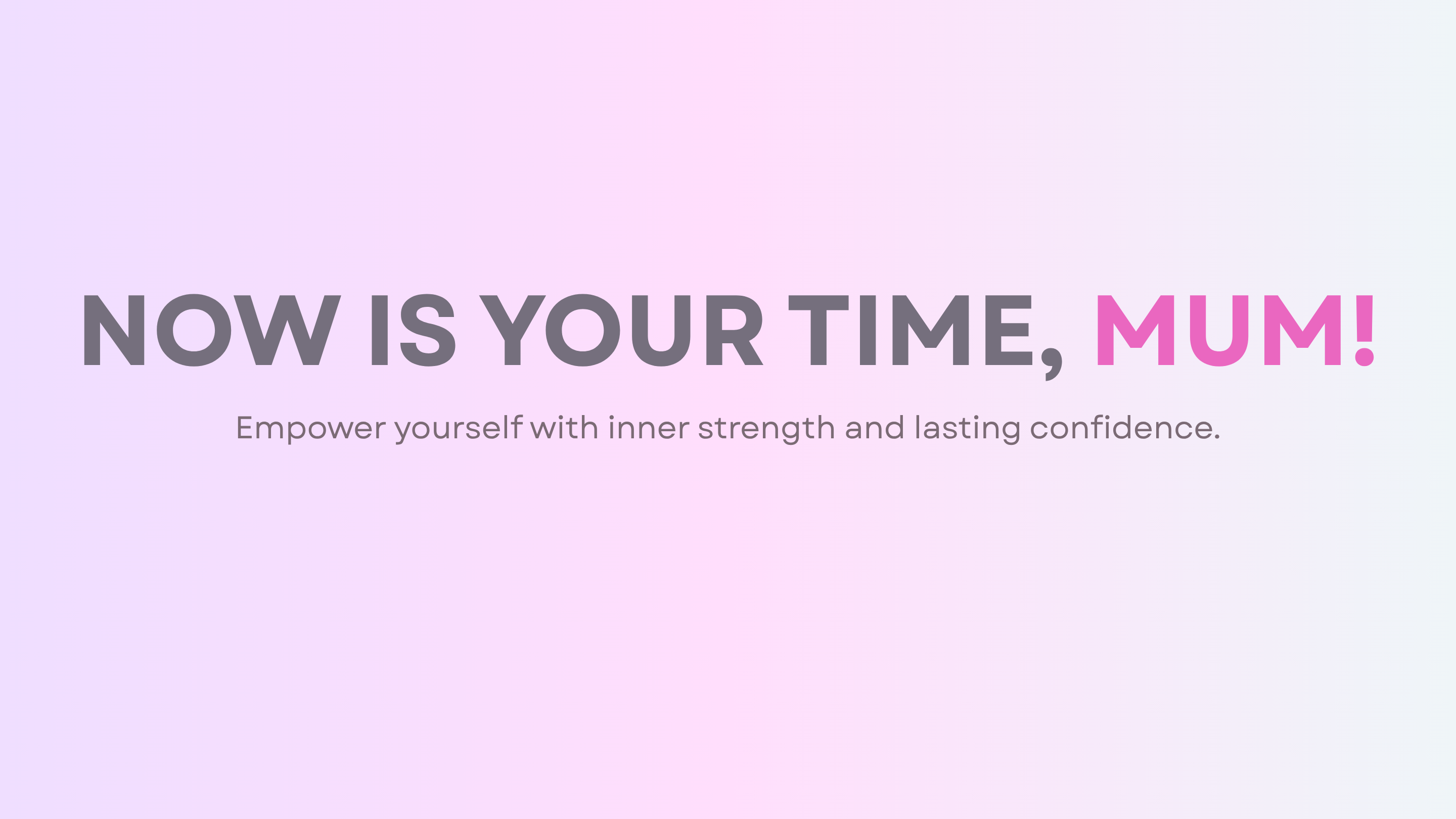
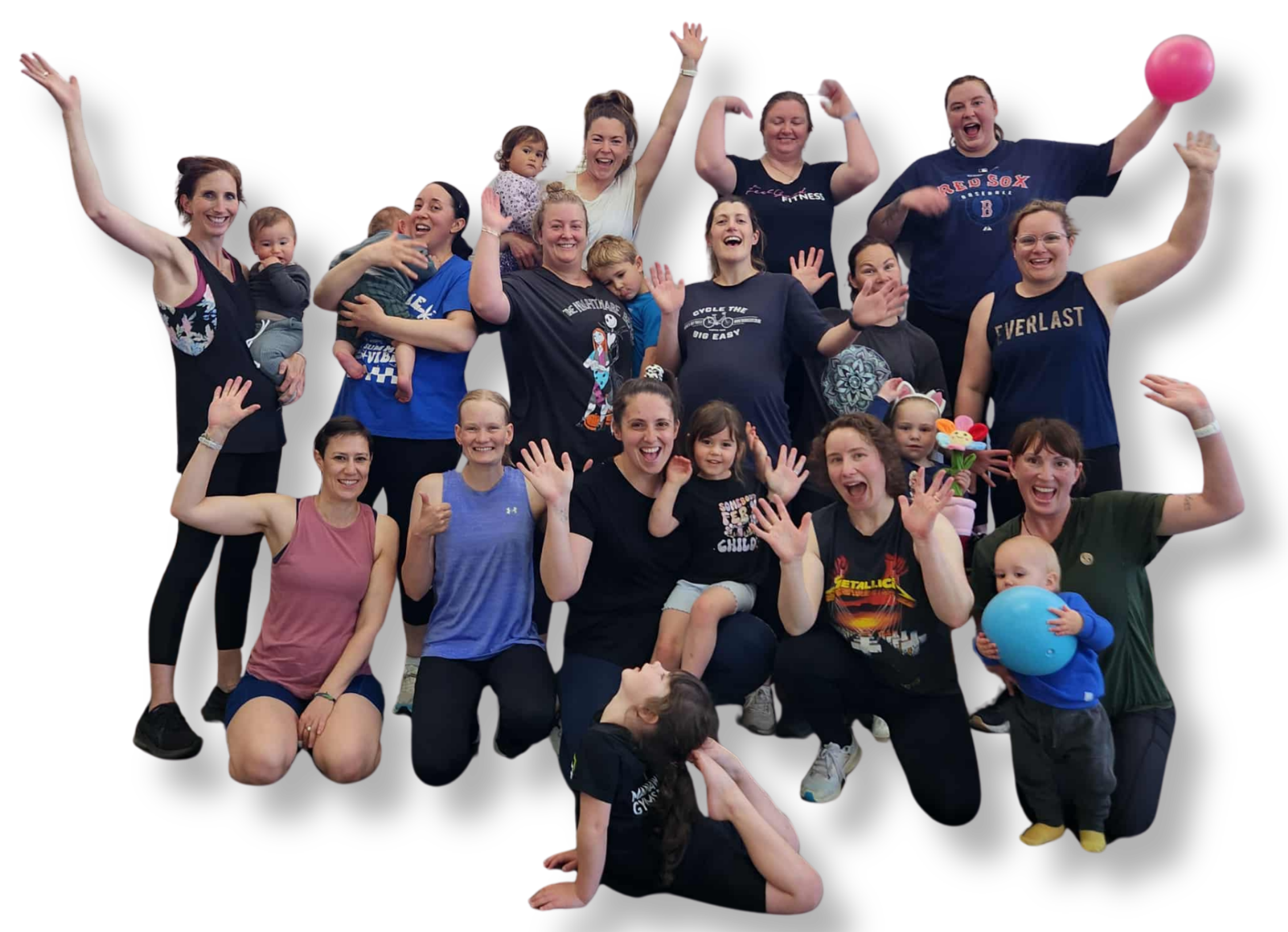


Safe & Effective Exercise For Mums Who Need Some Motivation To Move!
All of our classes offer fun, fitness and friendship. Our members are a wonderful group of friendly, supportive women who are all on a mission to live a healthier life.
Our classes are child friendly so your own fitness doesn’t have to pushed down your list of priorities as a busy mum. To find out more, view our class details and come along for a trial to see how you can take great care of yourself as well as the people you love.
Safe & Effective Exercise For Mums Who Need Some Motivation To Move!
All of our classes offer fun, fitness and friendship. Our members are a wonderful group of friendly, supportive women who are all on a mission to live a healthier life.
Our classes are child friendly so your own fitness doesn’t have to pushed down your list of priorities as a busy mum. To find out more, view our class details and come along for a trial to see how you can take great care of yourself as well as the people you love.
WHAT OUR CLASSES ARE ALL ABOUT

This class is something different every session , but always aims to challenge and entertain you. We focus on both strength and cardio, with safe and effective exercises for mum life.
You will work out in a group environment, but the emphasis is always on going at your own pace and our trainers are skilled at meeting you where your fitness is and adapting to suit. We all start and finish together so no one is left behind! This class is safe for both pregnant and new mums (Drs clearance may be required
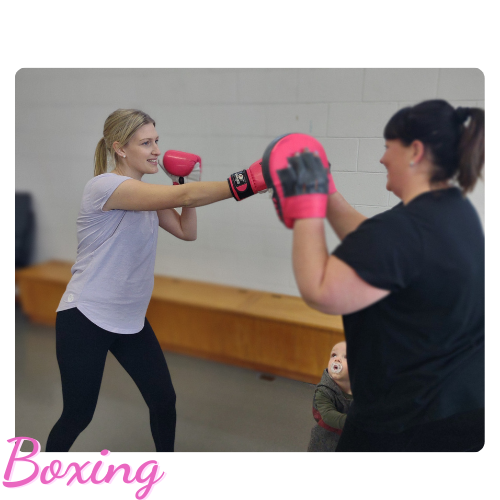
The focus is on fun and fitness- not fighting. This is an amazing class for getting up a sweat and really working your entire body in a fun and friendly atmosphere. So good for stress relief and having a laugh too!
You will be paired with someone of similar ability so you always get a good workout and quite possibly make some great new friends. This class is safe for both pregnant and new mums (Drs clearance may be required).
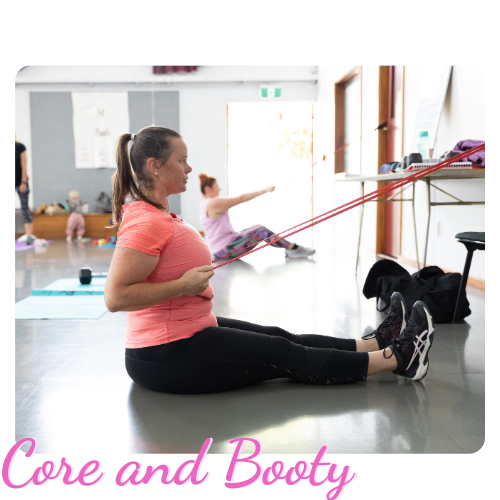
Learn how to connect and tone your pelvic floor and core correctly so that you are developing a stronger foundation to not only build your fitness, but cope with the demands of mum life.
This class is perfect for beginners or anyone who wants to ensure they are getting the most out of their core workout. We do lots of glute (booty) work as well as some full body strength. This class is safe for both pregnant and new Mums, see below for our postnatal recovery program.
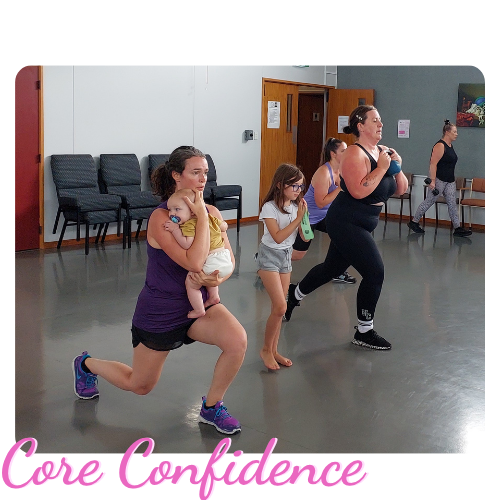
This program will assist you with returning to, or commencing exercise after giving birth. I strongly believe that every new mum needs guidance around how to safely rebuild their body after pregnancy regardless of whether they intend to return to higher impact exercise.
You will learn the most effective exercises to regain core strength and function, alleviate back, hip and pelvic pain. I will guide you through a series of progressive workouts so that by the end of the course, you are feeling more confident in both mind and body, to start increasing the intensity of your exercise if you wish.
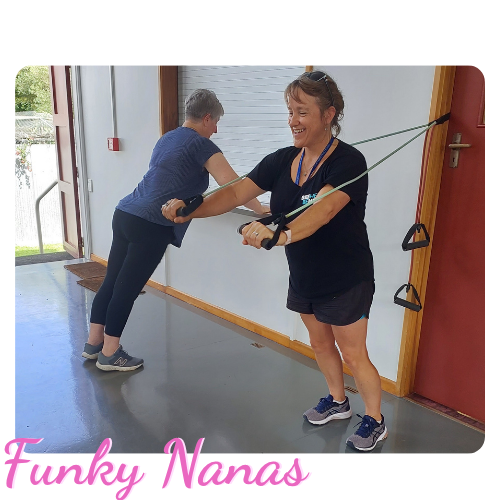
Designed for Grandmothers who want to maintain, or improve their strength and fitness in a friendly, supportive and fun environment! The age of our members in these classes currently ranges from 50-75 years.
It is expected that you are able to sit and stand from a chair, climb stairs and feel confident to move your body when attending these classes - please reach out if you’re not sure and I can guide you to the best option for you within in Feilding.
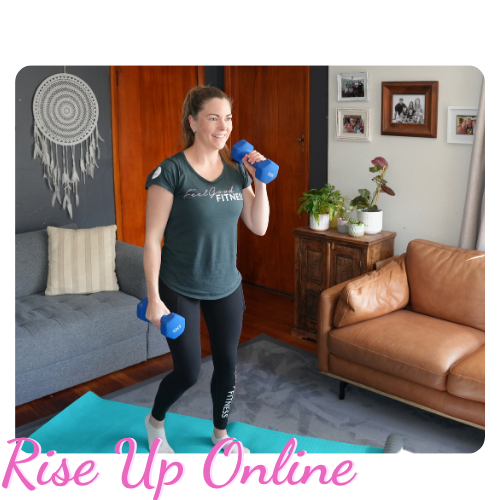
This online membership will give you the support, accountability and guidance to create your sustainable exercise routine and healthy lifestyle alongside a crew of other women who will cheer you on and lift you up!
With 2 new FB live workouts a week, quick educational videos and guides and a wonderful online community of mums, you’ll have all the tools you need to Rise Up into the highest version of you!
FEEL GOOD FITNESS TIMETABLE

FEEL GOOD FITNESS TIMETABLE


Hello, I'm Alicia
Motherhood is incredible, but it can also leave you feeling like you’ve lost yourself. If you’re juggling #mumlife and struggling to feel like you again, you’re not alone. I help mums rediscover their strength, energy, and confidence, even when life feels chaotic.
I know what it’s like to feel stuck. I started my career as a high school teacher in Wanganui and worked as a personal trainer in Melbourne, all while navigating food intolerances, hormone imbalances, anxiety, and the endless cycle of diets that never seemed to work. There were times I was 10kg over my ideal weight despite feeling like I was doing everything “right.”
Through my own journey, I discovered something important: health isn’t about restriction or perfection, it’s about creating habits and routines that make you feel good. When you focus on how you want to feel, rather than just the number on the scale, everything else falls into place. I now eat well, move consistently, enjoy treats without guilt, and feel more energized and confident at 40 with four young children than I ever did in my 20s.
Since becoming a mum in 2015, I realised just how little support exists for women navigating life after pregnancy. That inspired me to complete my Safe Return to Exercise qualification in 2018 and become a proud Mumsafe™ team member. Today, my mission is to empower mums of all ages to accept and appreciate their bodies, build strength, and become the happiest, healthiest versions of themselves, without fad diets or unrealistic expectations.
When I’m not working with mums, you’ll find me with my partner and our four children in Feilding, enjoying the outdoors, experimenting with nutritious new recipes, or moving my body in ways I love, whether that’s a walk, a solid strength workout, a quick HIIT session, yoga, or if I’m lucky, skiing or horse riding.
At the end of the day, feeling good isn’t just the goal. It’s how you create a life you love and the energy to show up fully for yourself and your family.
Hello, I'm Alicia
Motherhood is incredible, but it can also leave you feeling like you’ve lost yourself. If you’re juggling #mumlife and struggling to feel like you again, you’re not alone. I help mums rediscover their strength, energy, and confidence, even when life feels chaotic.
I know what it’s like to feel stuck. I started my career as a high school teacher in Wanganui and worked as a personal trainer in Melbourne, all while navigating food intolerances, hormone imbalances, anxiety, and the endless cycle of diets that never seemed to work. There were times I was 10kg over my ideal weight despite feeling like I was doing everything “right.”
Through my own journey, I discovered something important: health isn’t about restriction or perfection, it’s about creating habits and routines that make you feel good. When you focus on how you want to feel, rather than just the number on the scale, everything else falls into place. I now eat well, move consistently, enjoy treats without guilt, and feel more energized and confident at 40 with four young children than I ever did in my 20s.
Since becoming a mum in 2015, I realised just how little support exists for women navigating life after pregnancy. That inspired me to complete my Safe Return to Exercise qualification in 2018 and become a proud Mumsafe™ team member. Today, my mission is to empower mums of all ages to accept and appreciate their bodies, build strength, and become the happiest, healthiest versions of themselves, without fad diets or unrealistic expectations.
When I’m not working with mums, you’ll find me with my partner and our four children in Feilding, enjoying the outdoors, experimenting with nutritious new recipes, or moving my body in ways I love, whether that’s a walk, a solid strength workout, a quick HIIT session, yoga, or if I’m lucky, skiing or horse riding.
At the end of the day, feeling good isn’t just the goal. It’s how you create a life you love and the energy to show up fully for yourself and your family.

ADDRESS
St Pauls Parish Hall
Church St Entrance (next to mini golf)
Feilding
T: 0224 300 926
E: [email protected]
ADDRESS
St Pauls Parish Hall
Church St Entrance (next to mini golf)
Feilding
T: 0224 300 926
E: [email protected]

©Alicia Johnson Feel Good Fitness. All Rights Reserved
Privacy Policy:
Your information will never be shared with a third party. The information you share is solely for the purpose of giving you more information about our classes and / or booking your trial.

©Alicia Johnson Feel Good Fitness. All Rights Reserved
Privacy Policy: Your information will never be shared with a third party. The information you share is solely for the purpose of giving you more information about our classes and / or booking your trial.